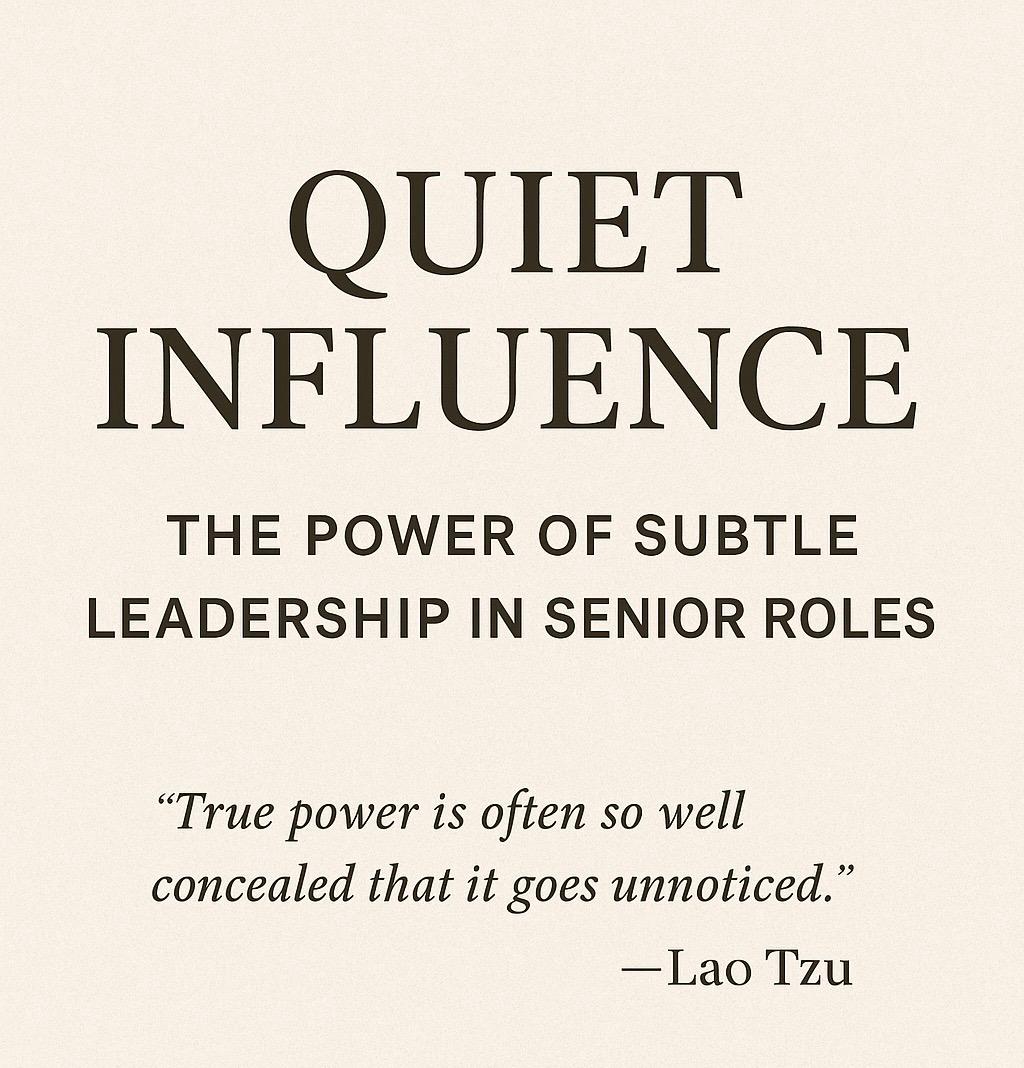
Some of the most powerful people we encounter in professional life are not those who command the room with volume, but those who shift it with presence. You may know them too: the executive who speaks only once in a meeting, yet everyone remembers what was said. The mentor who guides not by dominating the conversation, but by asking the question no one else thought to ask. Or perhaps you are that kind of leader, measured, observant, and deliberate.
In today’s noisy leadership culture, where charisma often outpaces character and visibility is mistaken for value, the quiet leader might seem like an anomaly. But look more closely, and you’ll find them at the center of high-functioning teams, resilient organizations, and cultures that endure.
Quiet influence is not about silence. It’s about depth. It is the kind of leadership that shapes decisions, develops people, and steers outcomes, without ever needing the spotlight.
The Cognitive Science of Subtle Power
There is compelling research supporting what experience has long suggested: influence does not require volume. A Harvard Business Review study revealed that introverted leaders often outperform their extroverted counterparts, particularly when leading proactive teams. Their strength lies in listening first, creating space for others to contribute, and acting with considered intentionality.
Likewise, the 2023 LinkedIn Global Talent Trends Report underscored a growing employee preference for leaders who are consistent, trustworthy, and empathetic, qualities that align more with reflective leadership than performative visibility.
Research from the Center for Creative Leadership further illustrates this point. Leaders who exhibit what’s called “listening intelligence”, the ability to attentively absorb, interpret, and respond to complex input, are 70% more effective at resolving conflict, aligning teams, and sustaining performance over time.
This is not accidental. Subtle power works because it is rooted in trust, not theatrics.
How Quiet Leadership Manifests in Senior Roles
At senior levels, leadership is rarely about controlling the conversation. It is about shaping the culture. Here is how quiet influence often presents itself in experienced professionals:
- Credibility Over Charisma: The loudest voice does not always carry the most wisdom. Quiet leaders let their record speak results.
- Mentorship and Sponsorship: These leaders lift others not through visibility but through access. They make introductions, advocate in closed-door meetings, and develop successors without seeking applause.
- Strategic Timing: Knowing when to speak is often more powerful than speaking frequently. In high-stakes environments, quiet leaders bring clarity, not noise.
- Listening as Leverage: People want to feel heard, and when they do, they stay engaged, committed, and open. Listening becomes a tool of influence across generations and hierarchies.
- Living Values, Not Declaring Them: Rather than broadcasting values, these leaders embody them. Over time, their consistency becomes their credibility.
Practical Ways to Cultivate Quiet Influence
For those who identify with this leadership style, or are learning to embrace it, quiet influence can be sharpened like any other skill. Here are practical strategies:
- Master the Strategic Pause: You do not need to fill every silence. Pauses often signal authority and create space for weightier insight.
- Ask Better Questions: Influence begins with understanding. Asking the right question can redirect a conversation more powerfully than making a strong assertion.
- Show Up With Consistency: You do not need to be everywhere, but you must be dependable. Influence grows through presence and preparation, not volume.
- Leverage Written Expression: Senior leaders often underestimate the power of well-crafted memos, thoughtful LinkedIn posts, or strategic notes. Writing allows your voice to travel further, quietly, but unmistakably.
- Amplify Others: Influence is not always personal. When you elevate the voices of others, especially emerging leaders, you expand your impact through them.
Redefining Power in the Age of Noise
In a time when leadership is too often equated with presence on a stage or posturing on a screen, the quiet influencer represents a return to substance. Their impact is not in how frequently they are seen, but in how deeply they are felt.
One of the most remarkable case studies is Angela Merkel, former Chancellor of Germany. Known for her calm demeanor, scientific rigor, and refusal to politicize her presence, she was once described as “the most powerful woman in the world, because she never needed to prove it.” Her leadership reshaped Europe not through charisma, but through clarity, constancy, and trust.
And therein lies the invitation to today’s senior professionals: to lead in a way that does not exhaust, perform, or seek validation, but to lead from within. Quietly. Intentionally. Lastingly.
Because true leadership doesn’t need to shout. It just needs to show up, consistently, with meaning.
References

